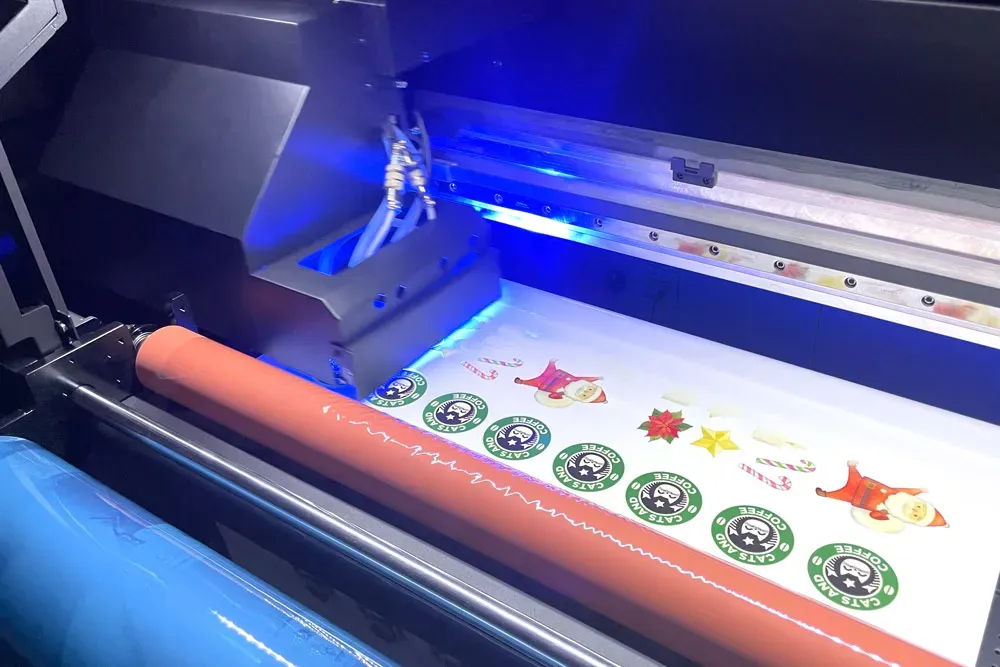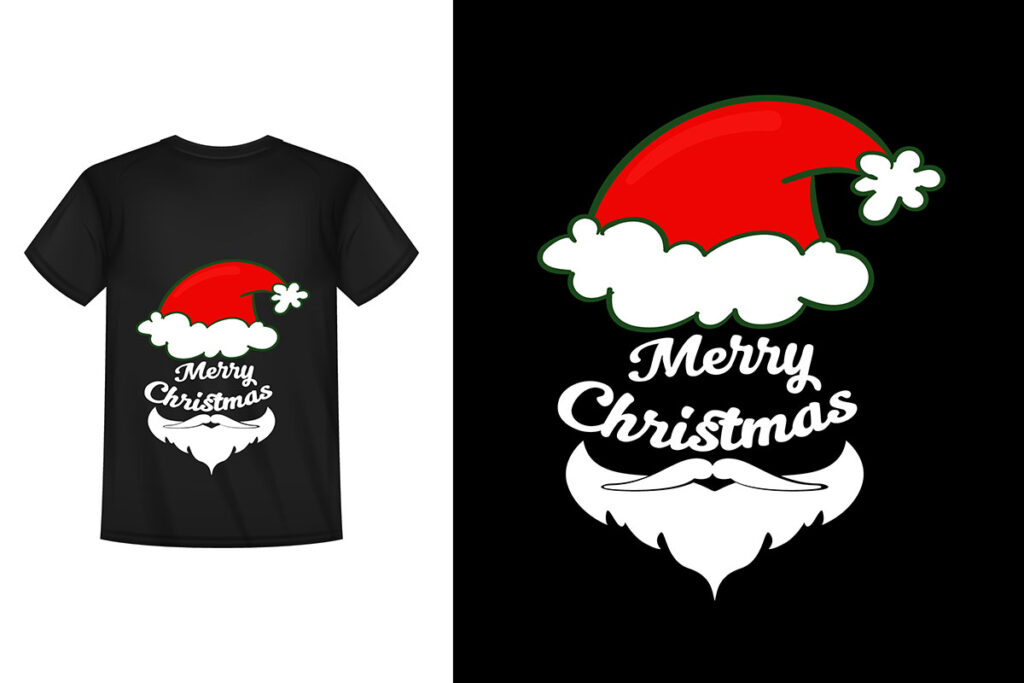In the ever-evolving world of printing technology, UV DTF (Direct to Film) printing emerges as a groundbreaking advancement that captivates both professionals and enthusiasts alike. This innovative technique harnesses the power of UV printing technology, merging it with the efficiency of DTF methods to produce stunning, high-quality prints that are incredibly durable. Known for its versatility, UV DTF printing not only caters to a range of materials, from garments to rigid surfaces, but it also opens doors to endless custom printing solutions. The printing industry innovations brought forth by UV DTF technology empower businesses to meet customer demands for vibrant graphics and personalized designs, reshaping the landscape of modern printing. As we dive deeper into the nuances of UV DTF and its applications, it becomes clear that this method is more than just a trend; it represents a significant leap forward in print technology.
Introducing the concept of UV DTF printing invites us to explore the realm of Direct to Film printing, an approach that incorporates the principles of UV printing technology. This hybrid method not only enhances the quality of prints but also expands the horizons of Gangheet printing, allowing for intricately detailed graphics on various materials. By utilizing specialized inks that are cured with ultraviolet light, businesses can deliver custom printing solutions that stand out in a competitive market. As we examine the intricacies of this technique, it is essential to appreciate how such innovations are setting new benchmarks within the printing industry, offering practical applications that resonate with both artistic and commercial demands.
Understanding UV DTF Printing: A Comprehensive Overview
UV DTF (Direct to Film) printing is a cutting-edge method that merges traditional print processes with advanced UV technology. This innovative technique allows for vibrant graphics on various materials. By utilizing special inks that are cured with ultraviolet light, the prints produced are not only eye-catching but also incredibly durable. This versatility makes UV DTF printing ideal for applications ranging from custom apparel to promotional materials, contributing to its growing popularity in the printing industry.
The process begins with specialized films that are designed to work seamlessly with UV inks, enabling precise and high-quality print results. During printing, the films load into the DTF printer equipped with UV lamps, which cure the inks instantly upon application. This innovation ensures that prints are ready for transfer almost immediately, significantly enhancing production efficiency, while also maintaining the exceptional quality that customers demand from custom printing solutions.
The Advantages of UV DTF Printing for Various Industries
One of the standout advantages of UV DTF printing is its remarkable versatility. This technology allows print service providers to work with an extensive range of materials, from textiles to rigid substrates, broadening the spectrum of applications. Whether it’s fashion brands looking to create unique pieces or businesses crafting personalized promotional items, UV DTF printing meets diverse customer needs effectively. The ability to produce high-quality output that is resistant to fading and wear adds to its appeal, making it a preferred choice in various sectors.
In addition to versatility, UV DTF printing also offers quicker turnaround times, enhancing operational efficiency. The curing process allows for immediate handling of prints, which is crucial for businesses operating in fast-paced environments. Furthermore, with environmentally friendly ink options available, the adoption of UV DTF printing supports sustainability initiatives within the printing industry, aligning with the growing consumer demand for eco-conscious products.
Recent Innovations in UV DTF Printing Technology
The landscape of UV DTF printing technology is evolving rapidly, driven by continuous innovation and market demands. Recent advancements in ink formulations have led to better adhesion and improved drying times, allowing prints to maintain their quality even under challenging conditions. These advancements significantly enhance the adaptability of UV DTF printing across a broader range of substrates, including specialized materials that were previously challenging to print on.
Moreover, the advent of hybrid printing systems that combine both UV and DTF technologies represents a significant milestone in printing innovations. This hybrid approach equips businesses with the flexibility to expand their service offerings, catering to a diverse clientele that seeks both personalized and high-quality print solutions. As such, UV DTF printing technology is not just about keeping pace with current trends but about leading the charge in printing industry innovations.
Navigating the Challenges of UV DTF Printing Transition
While the benefits of UV DTF printing are substantial, transitioning to this technology can pose certain challenges for businesses. One of the primary hurdles includes the need for specialized technical expertise. Operators must be adequately trained to navigate the complexities of UV technology, ensuring that prints meet quality standards. Addressing potential issues such as ink adhesion requires knowledge and experience, which are vital to maintaining operational efficiency.
Additionally, the initial investment cost for UV DTF printing equipment can be a hurdle, particularly for startups or small businesses with limited budgets. The financial commitment required may deter some companies from adopting this technology despite the long-term advantages. However, with a strategic approach to investment and training, businesses can successfully integrate UV DTF printing into their operations, gaining a competitive edge in the dynamic printing market.
Exploring Applications of UV DTF Printing Across Industries
The applications of UV DTF printing are extensive, making it a highly sought-after option across various industries. In the fashion sector, brands leverage this technology to deliver unique designs that captivate consumers’ attention. The ability to produce high-resolution graphics that stand up to wear and tear ensures that both style and durability are prioritized, allowing fashion businesses to differentiate themselves in a crowded marketplace.
Beyond fashion, UV DTF printing finds relevance in signage and home décor markets. Businesses utilize this technology to create detailed signage that requires clarity and durability, essential for effective advertising. Similarly, custom décor items, such as printed wood panels and textiles, are becoming increasingly popular, highlighting the diverse potential of UV DTF printing solutions and their application in enhancing everyday environments.
The Future of UV DTF Printing in the Evolving Printing Landscape
As the print industry continues to evolve, UV DTF printing stands to play a crucial role in shaping its future. The anticipated growth in the market indicates rising consumer interest in custom printing solutions and high-quality outputs. The versatility of UV DTF printing positions it as a frontrunner in these trends, making it an attractive option for businesses looking to expand their capabilities and service offerings.
Looking ahead, the integration of advanced technologies such as AI and automation into UV DTF printing processes may further enhance efficiency and output quality. As companies continue to innovate and adapt to market demands, the potential for UV DTF printing to revolutionize the industry remains strong. By understanding and harnessing the capabilities of this technology, businesses can unlock a wealth of opportunities that cater to the varied needs of today’s consumers.
Frequently Asked Questions
What is UV DTF printing and how does it work?
UV DTF printing, or Direct to Film printing, combines the efficient digital DTF process with advanced UV printing technology. It uses specially coated films and UV inks that are cured under ultraviolet light, enabling sharp, vibrant, and durable prints on various surfaces.
What are the benefits of using UV DTF printing for custom projects?
UV DTF printing offers numerous advantages for custom applications, including versatility across various materials, high-quality output that resists fading and peeling, quick production times, and environmentally friendly inks, making it ideal for unique, personalized prints.
How does Gangheet printing relate to UV DTF printing?
Gangheet printing is an innovative technique within the UV DTF printing realm, enhancing the ability to produce intricate designs and high-resolution graphics. This approach maximizes the potential of UV technology, allowing for detailed custom printing solutions in different industries.
What materials can UV DTF printing be applied to?
UV DTF printing can be applied to a wide range of materials, including fabrics like cotton and polyester, rigid surfaces such as wood and metal, and various promotional items, ensuring high-quality graphics and durability across different substrates.
Are there any challenges to implementing UV DTF printing in a business?
Despite its many benefits, implementing UV DTF printing can pose challenges such as the need for specialized technical training for operators and the high initial investment costs associated with purchasing UV DTF equipment.
What advancements are being made in UV DTF printing technology?
Recent advancements in UV DTF printing technology include enhanced ink formulations for better adhesion and quicker drying, hybrid printing systems that combine UV and DTF processes, and a growing focus on custom printing solutions to meet diverse market demands.
| Key Points | Description |
|---|---|
| What is UV DTF Printing? | A modern printing technique that combines DTF methods with UV technology, using films coated with inks cured by UV light for vibrant, durable prints. |
| The Process | 1. Film Preparation 2. Printing 3. Curing 4. Heat Transfer – Each step aims to ensure high-quality, resilient graphics across various substrates. |
| Advantages | Versatility across materials, high-quality results resistant to fading, quick production, and environmentally sustainable inks. |
| Recent Developments | Enhanced ink formulations, hybrid printing systems, and a surge in demand for customizable applications with intricate designs. |
| Market Landscape | The UV DTF market is growing rapidly, especially in custom apparel and promotional products, anticipated to grow by 12% annually over five years. |
| Challenges | Technical expertise required for optimal operation and the high initial investment needed for equipment can be barriers for some companies. |
Summary
UV DTF printing represents a significant advancement in modern printing technology, combining the efficiency of Direct to Film methods with the vibrant qualities of UV inks. This innovative technique not only enhances the visual appeal of printed products but also ensures their durability across diverse substrates. As businesses increasingly recognize its potential, UV DTF printing is set to revolutionize various industries, including fashion, signage, and home décor, delivering high-quality, customizable solutions that meet the demands of an evolving market.



